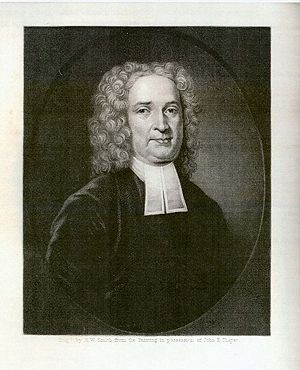Difference between revisions of "Sodomy law proposed: Massachusetts Bay, October 1636"
OutHistory (talk | contribs) |
OutHistory (talk | contribs) m |
||
| Line 9: | Line 9: | ||
Cotton's code was not adopted in Massachusetts. Instead, Nathaniel Ward's code was enacted in [[Sodomy law: Massachusetts Bay, November, 1641|1641]]. But in [[Sodomy law: New Haven, March 1, 1656|1656]] Cotton' s sodomy law was adopted in the New Haven Colony, with a significant amendation: the explicit reference to "woman with woman" was replaced by the more ambiguous prohibition against women changing the "natural use" into that which "is against nature." | Cotton's code was not adopted in Massachusetts. Instead, Nathaniel Ward's code was enacted in [[Sodomy law: Massachusetts Bay, November, 1641|1641]]. But in [[Sodomy law: New Haven, March 1, 1656|1656]] Cotton' s sodomy law was adopted in the New Haven Colony, with a significant amendation: the explicit reference to "woman with woman" was replaced by the more ambiguous prohibition against women changing the "natural use" into that which "is against nature." | ||
| − | |||
<div style="text-align: right; direction: ltr; margin-left: 1em;"> | <div style="text-align: right; direction: ltr; margin-left: 1em;"> | ||
Revision as of 13:40, 17 April 2008
Women, as well as men, should be put to death for "sodomy"

The Reverend John Cotton, who had been asked to draw up a legal code for Massachusetts Bay, submitted his proposal to the General Court.[2] Cotton proposed the death penalty for sixteen crimes: false worship, sabbath breaking, reviling the magistrates, cursing or smiting parents, blasphemy, idolatry, witchcraft, murder, adultery, incest , sodomy, bestiality, manstealing, false witness, wilful per jury, and treason.
The famous minister innovatively suggested that women, as well as men, be put to death for "sodomy," proposing:
Unnatural filthiness, to be punished with death, whether sodomy, which is carnal fellowship of man with man, or woman with woman, or buggery, which is carnal fellowship of man or woman with beasts or fowls.
Cotton's code was not adopted in Massachusetts. Instead, Nathaniel Ward's code was enacted in 1641. But in 1656 Cotton' s sodomy law was adopted in the New Haven Colony, with a significant amendation: the explicit reference to "woman with woman" was replaced by the more ambiguous prohibition against women changing the "natural use" into that which "is against nature."
Return to Age of Sodomitical Sin index • Go to next article
References
Article adapted from Jonathan Ned Katz, Gay/Lesbian Almanac (NY: Harper & Row, 1983) p. 133.
- ↑ Image source: Wikipedia. This engraving by a H. W. Smith, which was a copy of an original painting in the possession of John R. Thayer, was published in Samuel G. Drake The History and Antiquities of Boston, 1630–1770 (1856), opposite pg. 157.
- ↑ Jonathan Ned Katz, Gay/Lesbian Almanac (NY: Harper & Row, 1983), p. 74, citing William R. Staples, ed., The Colonial Laws of Massachusetts Reprinted from the Edition o f 1672 . . . (Boston: Rockwell &. Churchill, 1890), p. 35 n. and Jonathan Ned Katz, Gay American History (NY: Crowell, 1976), p. 20. For Cotton's sixteen capital crimes see: George L. Haskins, Law and Authority in Early Massachusetts ... (NY: Macmillan, 1960), pp. 124-25.